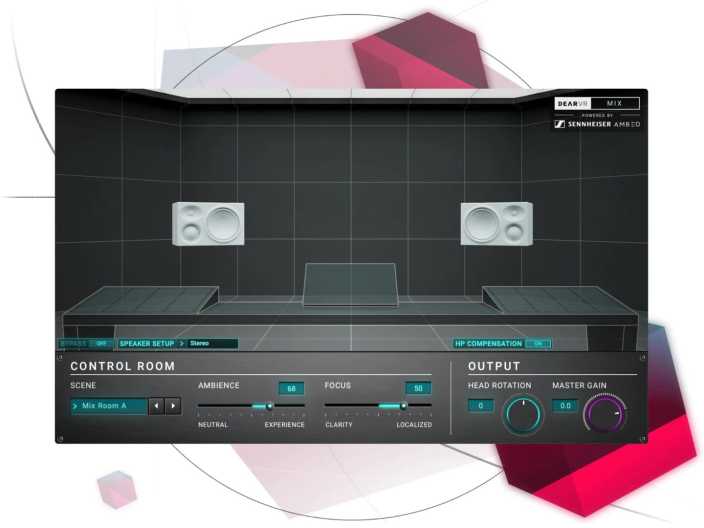Check Out Our Latest Episode Of The Hangout Podcast!
Mixing With Headphones: Is It Still Taboo?
For as long as I can remember, in the audio engineering community it has been a frowned upon practice to mix with headphones. Referencing and editing were okay, but absolutely no mixing. Then came the open back and semi-open back headphones being labeled as “better if you must mix with headphones”, but still not recommended to mix solely on headphones. Now in 2023 with a myriad of headphone options, room simulation plugins, eq correction, and now even a proprietary pair of headphones designed to be paired with a room simulation plugin (Steven Slate Audio VSX) is this still a bad practice that will leave you with less than stellar mixes? 
Ollo Audio S4X Open Back Headphones
Andrew Scheps
Does the name ring a bell? It should. Andrew is one of the top mixing engineers in the world; having worked with artists like Beyoncé, Jay Z, Adele, Justin Timberlake, and Red Hot Chili Peppers to name a few. He’s won Grammies and even has plugins with his name on them.
“Okay Del we get it. He’s a decorated audio engineer but what does that have to do with mixing on headphones?”
A few years back Andrew came out with a dark secret that he had been, in fact, mixing on headphones for quite awhile. The real shocker was not even that he did this without any EQ correction such as SoundID Reference or that he did not have some expensive DAC (just an Apollo Twin). It was his choice of mixing headphones; Sony MDR-7506!!!!
Sony mdr-7506 closed back headphones
This revelation really got myself, and many others thinking, “If one of the top mixers in the world is doing it, why can’t I?” Now whether out of necessity or just simply because they can, you’ll find many engineers working on headphones. Not just referencing either; actually mixing on them.
Have you tried mixing on headphones? Let us know about your experience.
Now while Andrew is fine with his trusty 7506s, most would agree that there are certainly much better headphones available these days. Coupled with newer advancements in plugins that can further improve upon the issues with in headphone mixing, such as the lack of phantom center, one could really make a case for not mixing on monitors at all!
Okay that’s a bit far Del…
Maybe, but let’s take a look at some of the options currently available:
Not sure if they were the first, but they were my first introduction to software designed to make the headphone mixing experience better. With features such as head tracking and room ambience, NX simulates the experience of mixing in a room with monitors. Another useful feature of NX is the Headphone EQ, which is supposed to flatten the frequency r
esponse of select models (over 270 as of September 2022). In addition to the original version there are now 3 other versions ( Abbey Road Studio 3, CLA Nx, Nx Germano Studios, Nx Ocean Way Nashville) that instead of being some random space, are modeled after these legendary control rooms.
I can say that the very first mix I did fully on headphones was done through this with the Beyerdynamic DT880 Premium and it came back with only one minor revision.
Beyerdynamic dt880 premium semi-open headphones

SoundID Reference for Headphones (previously Sonarworks)
While it doesn’t do anything to simulate how speakers respond in a room, SoundID corrects the frequency response of more than 400 of the most popular headphones to flatten them. This is great because it allows you to hear what your work actually sounds like instead of the colored sound of a particular set of headphones.
Having used both this and NX, I prefer the correction of this over NX. So much so, I use the two in conjunction with one other. NX first for the room simulation and then SoundID after to flatten the headphone curve for output.
dearVR (MIX & MONITOR)
Dearvr mix
Another take on a combination of room simulation and headphone correction, which they call Spatial Headphone Compensation. dearVR comes in two variations. dearVR MIX is designed for stereo mixing and currently supports 50 models of headphones, 3 mix rooms, 4 mono & stereo loudspeaker positions, and 6 additional, non-studio, listening environments. 
dearVR MONITOR is designed for immersive headphone mixing. Like the stereo version, it supports the same headphone models, 5 mix rooms, 11 environments, and 26 multi-channel loudspeaker formats up to 7.1.4 and 9.1.6.
Slate VSX Headphone Mixing System
I couldn’t write this article without mentioning this one. If you have been involved with audio recording and mixing for even a short amount of time you are very likely aware of the boundaries being pushed by Steven Slate. Like the Virtual Mic System (VMS), VSX approaches headphone mixing from a hardware and software component approach rather than just software. This combo comes in two versions: Essentials Edition and Platinum Edition. Both come with the VSX headphones and where they differ is in what’s available in the software.
| Essentials | Platinum |
| 2 Mix Rooms (Called Individual Spaces) | 7 Individual Spaces |
| 2 non-studio environments | 6 non-studio environments |
| 2 Pro Headphone models | 5 Pro Headphone models |
| More Individual Spaces can be purchased. | All New Spaces Free |
If you noticed the chart above, there’s another big differentiator with the Slate system. It can model other headphones.
Talk about being able to reference on multiple sources!
These are just four of the options currently available and with technology expanding at the blink of an eye, more and more will be here soon.
We’d love to hear about your headphone mixing experience or thoughts on headphone mixing in general.
- Are you mixing on headphones?
- What Model?
- Are you using any additional software to assist you with mixing on headphones?








